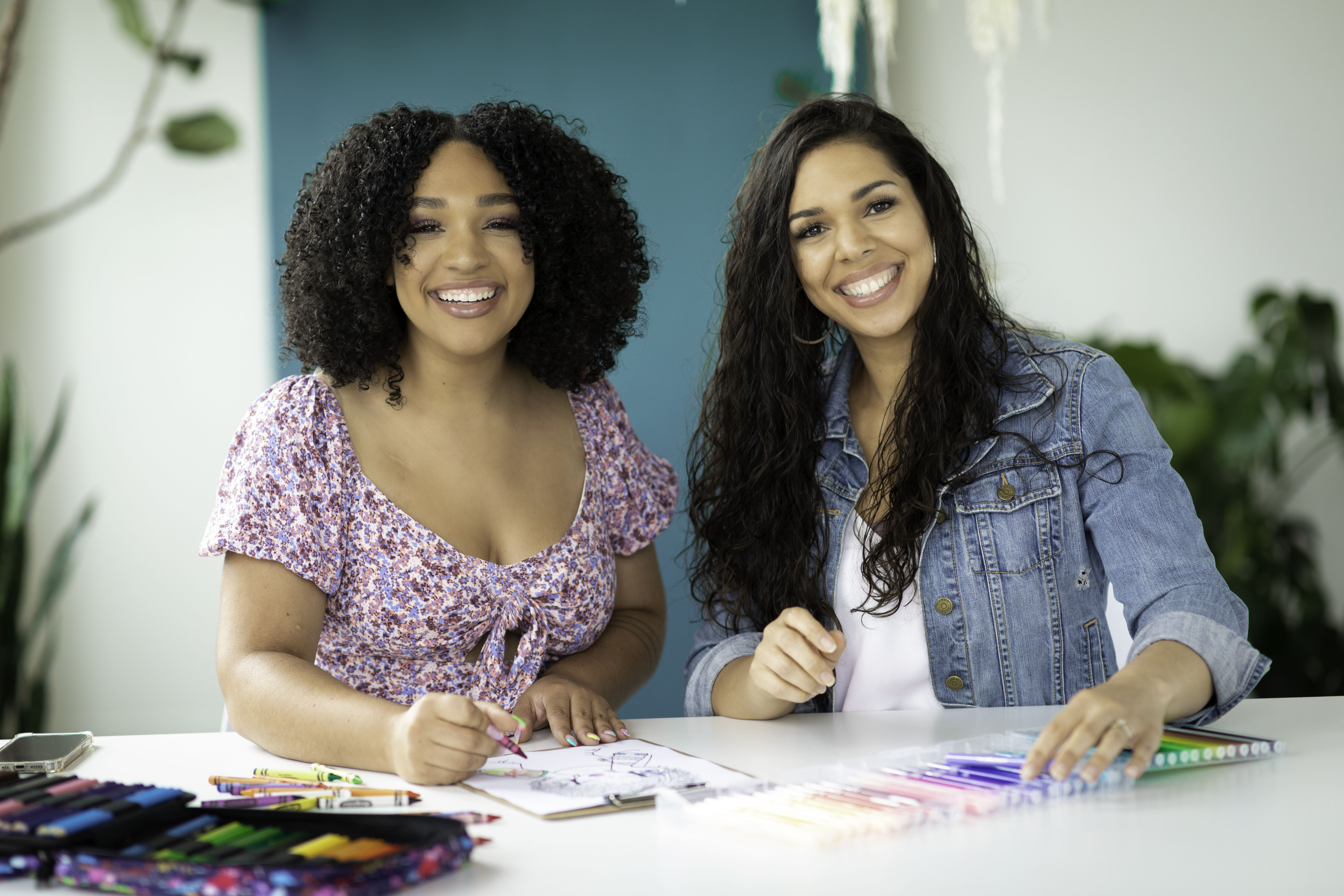Color of We, created by sisters BreAnna Jones and Cheree Hayes, is untangling the lack of representation for all Black hair textures and styles with their digital coloring books for girls everywhere. Their first digital coloring and activity book series named “Black Curl Magic Coloring Salon” has three volumes that celebrate the diversity of Black hairstyles like twists, locs, braids, afros, puffs, and coils.
For most Black women and girls like myself, our hair is our pride and glory. It’s a crown on our heads that is intertwined with our confidence, identity, and our idea of beauty. If you’re like me, you were probably taught by the Black mothers and aunties in your life that how you look is a reflection of who they are which is why our hair always had to look “presentable.” This may be why today we resent getting our hair wet or sweating it out.
For the majority of my childhood, I didn’t see much representation for Black girls with hair textures that look like me. For a portion of my life, I was raised in a predominantly white neighborhood. Being one of the few Black kids in the school I was taught that my natural 4C kinky hair was “messy, nappy, or embarrassing.” I was taught to assimilate and became very familiar with hot combs and the 'Just for Me' relaxer at a young age. As I continued to grow up, I thought that the only acceptable natural hair type was the 3C curl pattern like most of the middle-toned Black girls I would see in mainstream commercials and shows on Disney and Nickelodeon.
I never shared this before but even throughout college, I was reluctant to wear braids and other natural styles out of fear of not being accepted, seen as professional or intellectual so I only wore weaves, ponytails, and every other hairstyle I felt would be deemed “acceptable.” During my senior year, I realized I was pretending to be someone I’m not and grew frustrated and angry with myself for assimilating to the expectations of academia and the media industry. I asked my dad to take me to his barber days before the New Year of 2018 and I shaved my head to redefine who I am beyond my hair. That was such a pivotal moment in my life because as I graduated college, I also felt like I graduated from the misperception that I had to look a certain way as an educated Black woman in this world in order to be accepted and taken seriously. I learned to boldly embrace the beauty of my hair texture and favorite styles to stand firm in who I am and what I believe. Best believe my anthem song for the year was “I am not my hair” by India Arie!
Color of We is essential for our Black girls today. We need more representation of Black girls with diverse hair textures and styles like locs, puffs, braids, short hair, and twists. With movies like Nappily Ever After, documentaries like Good Hair and the Oscar Award Winning short film Hair Love there are pivotal conversations happening in mainstream media teaching Black girls and women today to embrace their hair textures beyond what they were taught growing up. Color of We is helping lead this conversation and representation in media for girls ages 9-12+ through our coloring pages and activities that are fun, educational, and inspiring. I personally believe exposure is one of the best forms of education and enthusiasm which is why it’s imperative for Black girls to see people who look like them represented in coloring books, shows, movies, commercials, and the list goes on.
I’m proud Color of We is setting the example for other coloring books, and platforms which have the power to influence how Black hair textures and styles are perceived. I can now live in confidence knowing my goddaughter, little sisters, and future daughter will be able to see a representation of themselves in the things they enjoy. Overall, there’s beauty in natural hair regardless of the texture and or hairstyle. Color of We is shifting the trajectory of how our Black girls are combing through their own confidence and identity through their hair and I love to see it!
